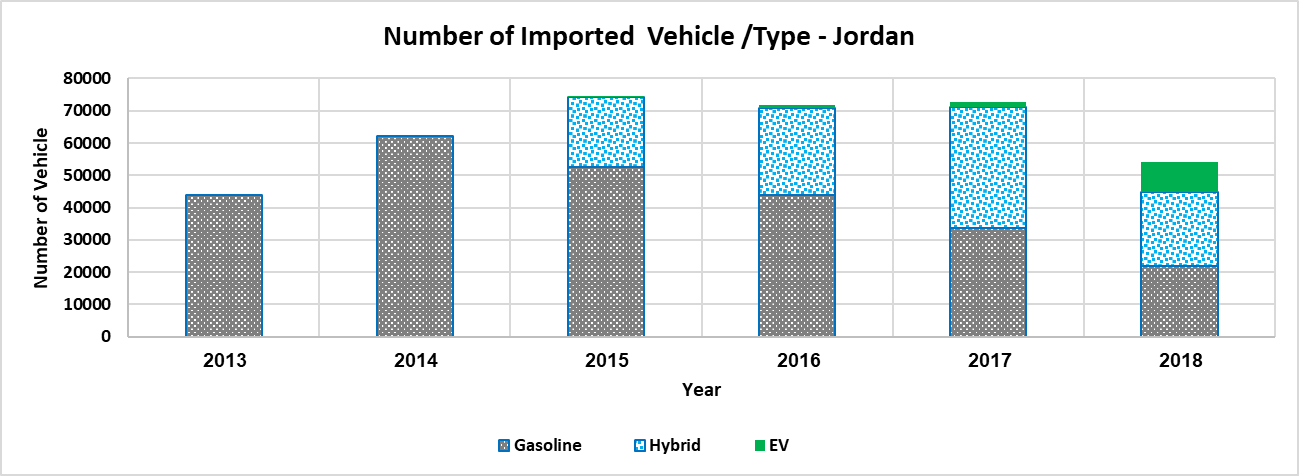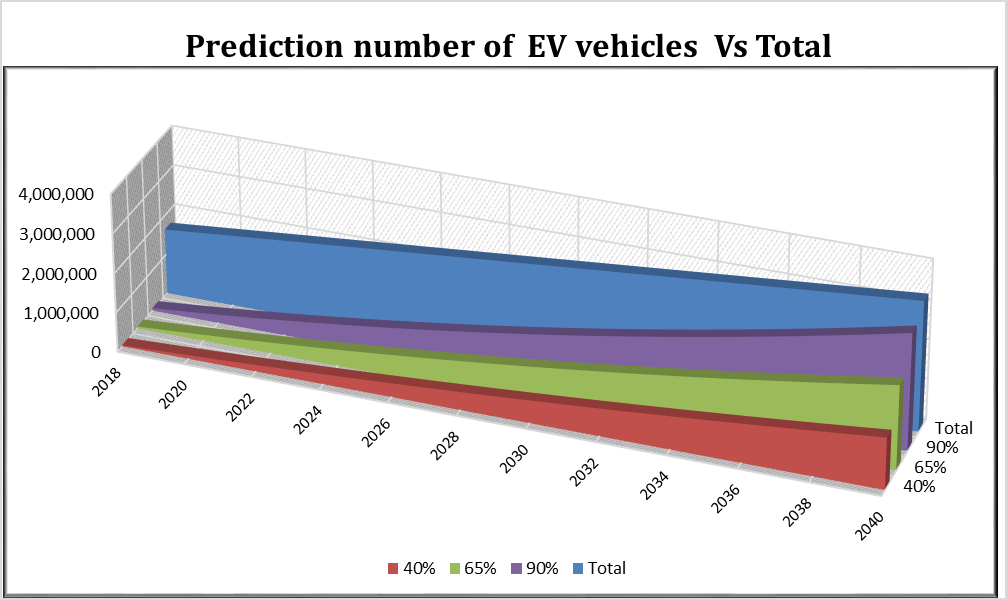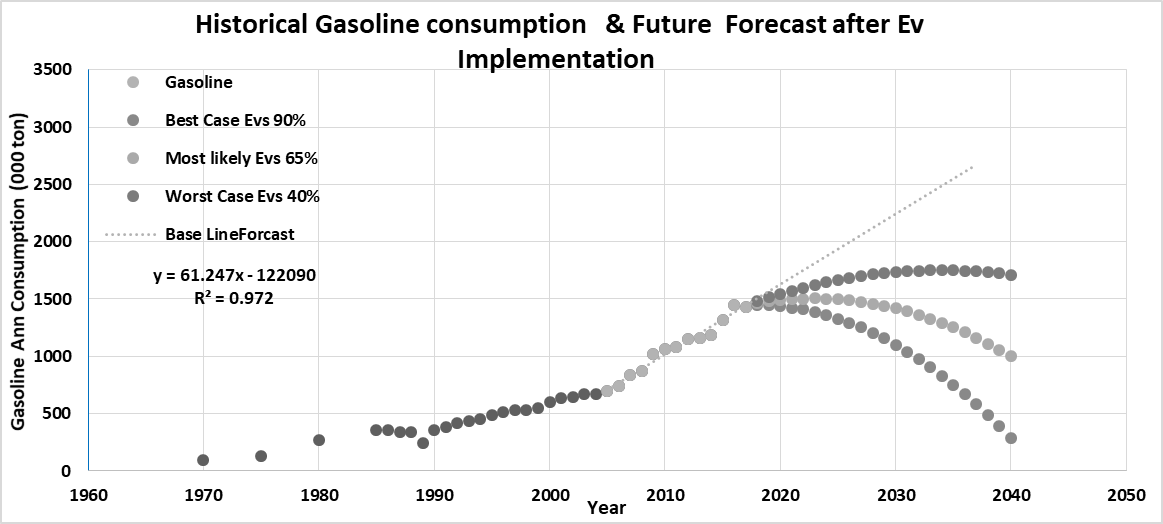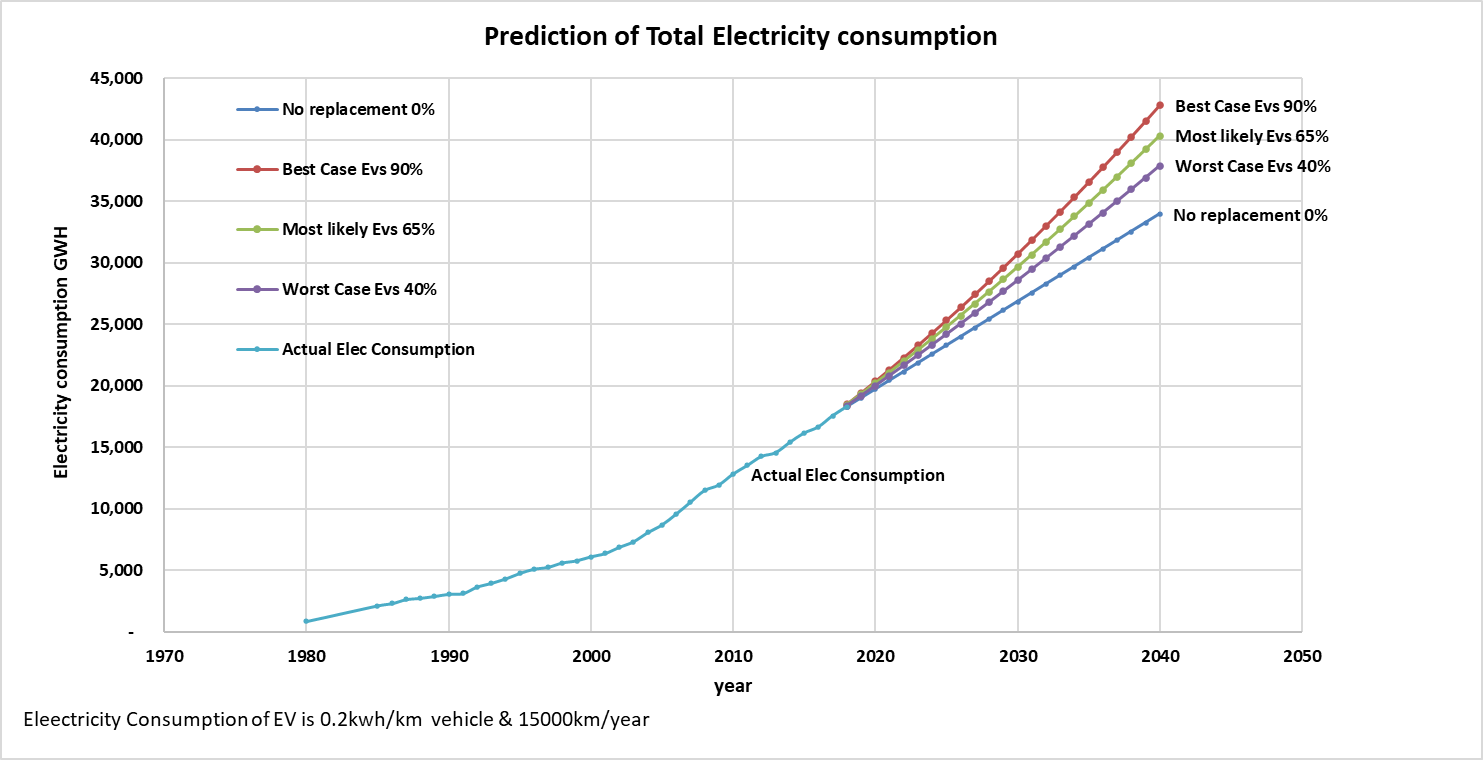INTRODUCTION
Sustainability implies the provision of more efficient services that maintain public health and welfare, are cost-effective, and reduce negative environmental impacts, both now and in the future. A definition of sustainable development provided by an ASCE/UNESCO working group on developing sustainability asserts that sustainable development is truly about achieving a balance between several objectives (environmental, economic, and social) over dynamic time and spatial horizons. Accordingly, research in the area of sustainable urban infrastructure reflects the need to design and manage engineering systems in light both of environmental and socioeconomic considerations. A principal challenge for the engineer is the development of practical tools for measuring and enhancing the sustainability of urban infrastructure over its life cycle1,2. In order to assess environmental sustainability performance, two major aspects (technology and energy) must be taken into consideration, in addition to the known three dimensions of transportation sustainability, since they affect the economy not only through operational processes but also through the manufacturing of vehicles and the construction of the infrastructure3. The development of environmentally sustainable transportation is vital since the modes of transportation that depend on fossil fuels are causing all kinds of pollution, emissions, waste, etc. Adopting the suitable planning and modelling strategies for the development of transportation system infrastructure is the main goal for any study, since this will improve the current and long-term situation. However, as the population has increased over time, cities have grown, and globalization and free trade have increased the regional and international movement of people and goods, leading to the dramatic expansion of our transportation infrastructure and systems. The cars, trucks, buses, subways, trains, airplanes, ships, and ferries that we use to move ourselves and our goods today have significant implications in terms of energy and material resource use, environmental pollution, noise, and land use at local, regional, and global levels. Transport is a vital sector for the Jordanian economy and an important component of the daily life of Jordanians. In the past decade, the country has heavily invested in expanding the road network, which constitutes the backbone of the national transport system, improving urban transport, and enhancing the logistics industry and international connections. In parallel, the transport sector has seen a gradual process of liberalisation, opening the market to private operators and private investors. To face these new tasks, the institutional set up has been, and is still being, gradually transformed4. Transport demand, both for passengers and freight, is growing rapidly, due to the growing population and the economic development within the country and in the region. This growth is concentrated on parts of the transport networks near the main urban areas and along the key corridors. As a consequence, parts of these networks are under pressure, and performance is below that required. This situation is predicted to worsen to the end of the next decade, with the system becoming unable to perform as needed to support the Jordanian economy and the daily life of citizens. Like any other developing country, the infrastructure and transportation sector in Jordan suffers from short-sighted planning and lacks a comprehensive and integrated vision, which has left Jordan with serious problems related to high levels of congestion, especially at rush hours, poor safety procedures, high incremental traffic accident figures, and low-quality requirements for transporting goods and passengers. The remainder of this article is structured as follows: the next section provides a literature review related to sustainability and transportation. The subsequent section provides an analysis of Jordan’s infrastructure and transportation. This is followed by an explanation of the methodology adopted in this research. The subsequent section presents and analyses the results. Conclusions, including predictions and recommendations are provided in the final section.
LITERATURE REVIEW
Defining sustainability and the sustainable development of transport systems in the current research climate is not easy since it incorporates global aspects related to meeting present needs without reducing the ability of future generations to also meet their needs; for example, “There are no common opinions also about city public transport safety systems and controlling the public transport system in a whole, it is necessary to remember also about sociological factors. Europe needs professionals and also young professionals especially in the field of sustainability, sustainability in transport including energy efficiency, ecology and other aspects”. Achieving energy efficiency and reducing global pollution is possible if, and only if, sustainability is implemented in each field. A re-examination of the definition of sustainability will be key for new scientific ideas and ways of thinking about public transport systems and their sustainable development. Public transport systems can be sustainable based on the type of impact they have on the environment and society. They can also be a means of helping to achieve sustainability in other aspects of human life5. There is much discussion about sustainability and about transportation indicators. Jeon, Amekudzi and Guensler6 developed 11 indicators to determine environmental, social, and economic impacts, as well as the sustainability performance of the transportation system for different scenarios in Metropolitan Atlanta. The 11 quantified indicators were aggregated into four dimensions of sustainability indices (environmental, social, and economic impacts, and transportation performance). Scenarios were evaluated based on a composite sustainability index encompassing the indices for the four sustainability categories. Maoh and Kanaroglou7 developed a tool as an add-on module in an integrated transportation and land-use model for assessing urban sustainability. The indicators were based on large-scale simulation models such as SPARTACUS, PROPOLIS, and PROSPECTS to reflect aspects of the environment, society, and economy, grouped into three sustainability categories. The weights for the individual criteria were developed through a Delphi process using four experts in the field of transportation planning. The weights of the indicators were based on the relative costs to society for those indicators. The tool thus provides information on identifying appropriate performance measures for sustainable transportation (see Figure 1).
7 According to Haghshenas and Vaziri8,
although there has been numerous studies about indicators and their application, few
studies uses sustainability indicators to compare systems. Previous studies that
have applied this concept include Jeon9,
Kennedy10, Haghshenas and Vaziri8, Miller11, and Jeon, Amekudzi and Guensler12, considered sustainability in terms of dimensions that can be
quantified.
According to Haghshenas and Vaziri8,
although there has been numerous studies about indicators and their application, few
studies uses sustainability indicators to compare systems. Previous studies that
have applied this concept include Jeon9,
Kennedy10, Haghshenas and Vaziri8, Miller11, and Jeon, Amekudzi and Guensler12, considered sustainability in terms of dimensions that can be
quantified. JORDAN’S INFRASTRUCTURE
Jordan is unlike other neighbouring Arab countries; it is a non-oil-producing country with limited natural resources and minerals. The country faces persistent unemployment, in addition to a growing budget deficit and inflation. Jordan is known as a politically stable country; however, the area surrounding Jordan currently is not. Like many other developing countries, it has experienced rapid population growth. Furthermore, the nation is experiencing increased pressure on natural resources, widening income disparities, and growing poverty. Countrywide, access to fresh water represents the most pressing challenge, both in terms of quantity and quality13. Since Jordan enjoys conditions of security and political stability, Jordan has been subject to many waves of forced migration since 1948, which were mostly for political reasons due to wars and revolutions in several neighbouring countries. Jordan experienced four major immigration waves, which caused unexpected increases in the population; the population has increased 10 times in the last 65 years.14. Infrastructure has been affected by these unexpected increases in population, the major effects were on water, transportation, energy, education, and health. The civil war in Syria, which began in 2011, is still having serious impacts on the region, while the situation in Iraq, dating back to 1990, can still be valued as unstable4.
ENERGY
Jordan imports 96 % of its energy from other countries, which constitutes a high percentage (8 %-20 %) of the country’s GDP. This has led to scaling up the development of alternative energy sources and enhancing energy efficiency in buildings and industrial processes; this is critical since demand for energy is increasing year on year (driven largely by the population increase discussed above) (see Figure 2).
16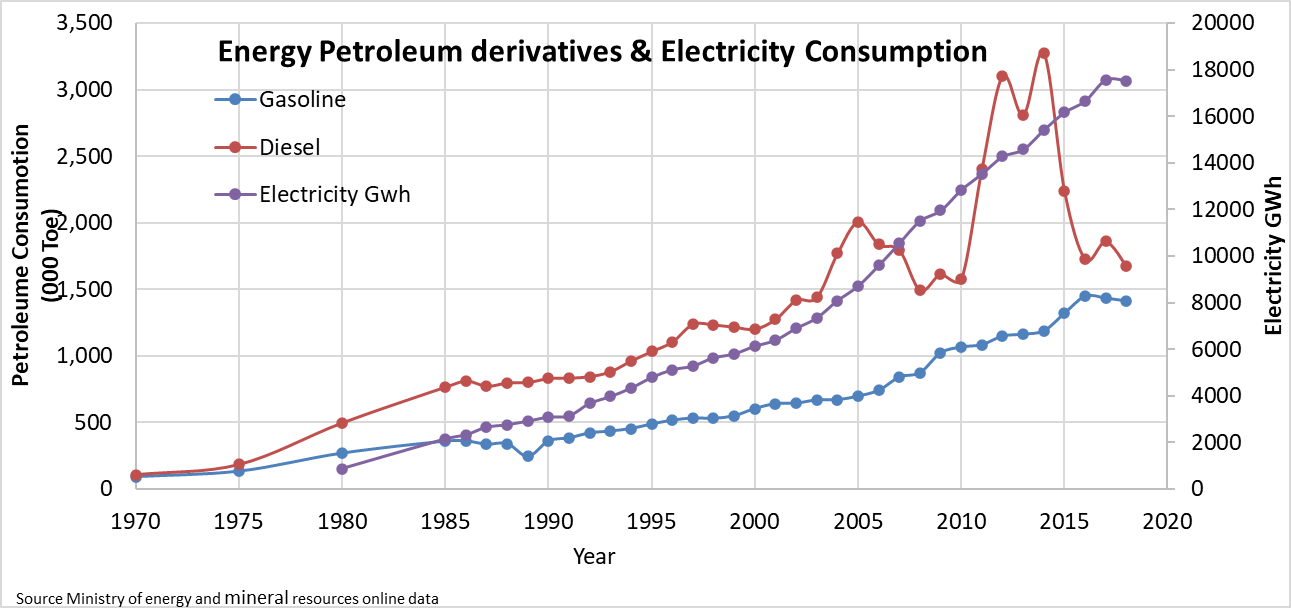 renewable energy investment. One of the most crucial perquisites for renewable
energy success in Jordan is that it enjoys 300-320 days of full sunshine a year. It
also has an above-world-average wind speed of 7 meters per second (as high as 7,5
meters to 11,5 meters per second in hilly areas) and has among the highest per
capita ratios of engineers in the world.
renewable energy investment. One of the most crucial perquisites for renewable
energy success in Jordan is that it enjoys 300-320 days of full sunshine a year. It
also has an above-world-average wind speed of 7 meters per second (as high as 7,5
meters to 11,5 meters per second in hilly areas) and has among the highest per
capita ratios of engineers in the world. TRAFFIC, MOBILITY, AND SAFETY
Jordan has one of the highest per capita and per vehicle ratios for traffic accidents involving fatalities in the world coinciding with low pedestrian safety procedures. Based on Jordan’s Long Term National Transport Strategy, transport safety is a critical issue in Jordan. Although the Jordan National Transport Strategy encompasses all transport modes, the most significant improvements in Jordan’s transport-related safety challenges need to be achieved mainly in the road sector. The proposed relevant measures cover three fields of action: road users’ behaviour; vehicles characteristics; and infrastructure characteristics. Although a national strategy for transport safety is still missing, there is a separate National Transport Safety Programme, which complements the strategy document and aims to fill this gap, suggesting several integrated measures to mitigate the major risk factors affecting road safety4.
ENVIRONMENT
Car ownership rates have increased in Jordan, leading to more passenger trips by motorized vehicles and thus more pollutants and greenhouse gases are emitted and more noise is generated. Similarly, in freight transport, alternatives to transporting goods by road vehicles (heavy or light duty vehicle [HGV/LGV]) barely exist. Therefore, the Jordan freight industry depends heavily on road transport (trucks). Both passenger transport by car and freight transport by truck have serious environmental impacts, including the emission of pollutants and greenhouse gases and increased noise levels. Air quality is already deteriorating in Jordan, particularly in urban areas, and is predicted to continue to do so. Other environmental impacts of cars and trucks in Jordan have costs for other users, economic processes, natural and man-made, or social environments. The costs resulting from these impacts on other individuals or other processes are usually called externalities or external costs15. As well as aiming to improve the competitiveness of alternative private road transport, both for passengers and freight, Jordan’s Long Term National Transport Strategy and Action Plan4 is also aiming to reduce the impact of the transport sector in relation to the environment (pollutant emissions, greenhouse gasses, and fuel consumption). Transport model simulations show that the vehicle kilometres in private transport are predicted to increase by 56 % (road freight transport by 44 %) in the long term (by 2030), fuel consumption is predicted to grow by approximately 30 %, CO2 emissions will increase by 26 %, and NOx emissions are predicted to decrease by 14 %. Figure 3 shows the growth rate for several years4.
4.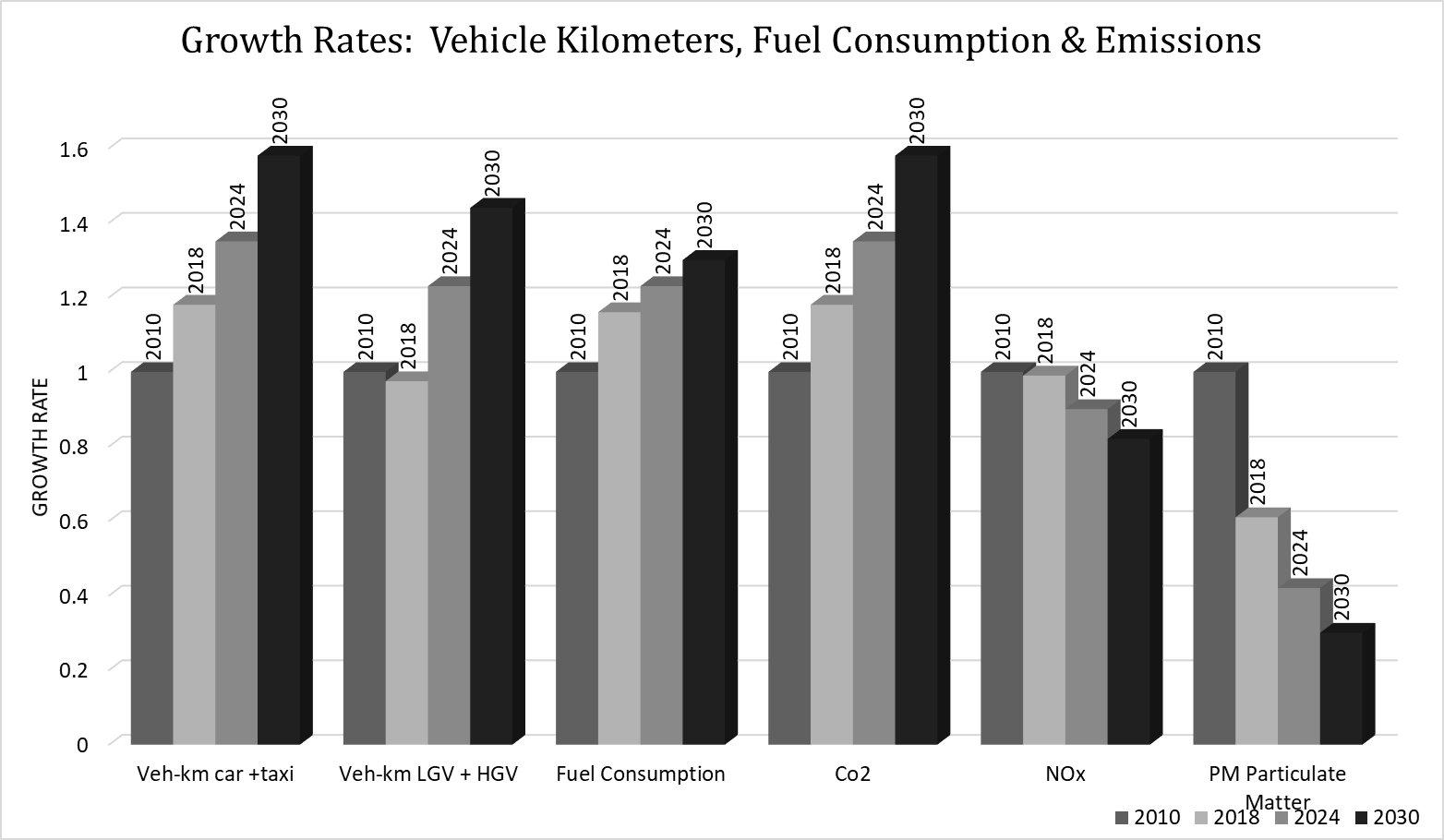 Transportation is one of the major contributors to climate change, which is
caused by the so-called greenhouse gases (GHGs) that trap heat reflected from the
surface of the planet in the lower atmosphere causing the greenhouse effect. The
primary GHG is carbon dioxide, which is responsible for about two-thirds of
human-induced climate change.
Transportation is one of the major contributors to climate change, which is
caused by the so-called greenhouse gases (GHGs) that trap heat reflected from the
surface of the planet in the lower atmosphere causing the greenhouse effect. The
primary GHG is carbon dioxide, which is responsible for about two-thirds of
human-induced climate change. METHODOLOGY
The quantitative methodology adopted in this article uses data retrieved from various prior studies (individual authors, institutions, organizations, and companies, both public and private) as well as from secondary sources, such as periodicals, brochures, articles, and relevant regional, local, and international studies. Regression analysis is used as a form of predictive modelling to forecast the future demands related to transport. As is well known in the field of transportation, data analysis is probably the most important and widely used research tool available for demand analysis.
ANALYSIS
Jordan imports almost 96 % of its primary energy and this equals to 7-10 % of the country’s GDP. The primary energy consumption for the transportation sector was 50 % of the total throughout the years 2013 to 2018, so it is vital to carefully analyse this sector. Jordan’s transport system is primarily based on individual transport, with almost no public transport system, and the high growth rate in the number of vehicles, combined with the high growth rate of the population is creating pressure on the country’s infrastructure and seriously affecting the country’s economy. In this analysis, the transportation system will be evaluated with respect to sustainability, based primarily on the number of registered vehicles, energy consumption and its effect on the environment. Statistics shows that the consumption of primary energy has followed the same trend over the last 27 years, with energy consumption growing from 3 million equivalent tons to 10 million equivalent tons over this period. The country’s population followed a similar upward trend, as has the number of registered vehicles, the vast majority of which are privately registered. It is difficult to predict the future growth in the number of vehicles since it is linked to the growth in population, which is governed by geopolitical issues in the region, even though in making future predictions the curve behaves perfectly, with the straight-line regression with a high R2 value of 99,85 % (see Figure 4).
4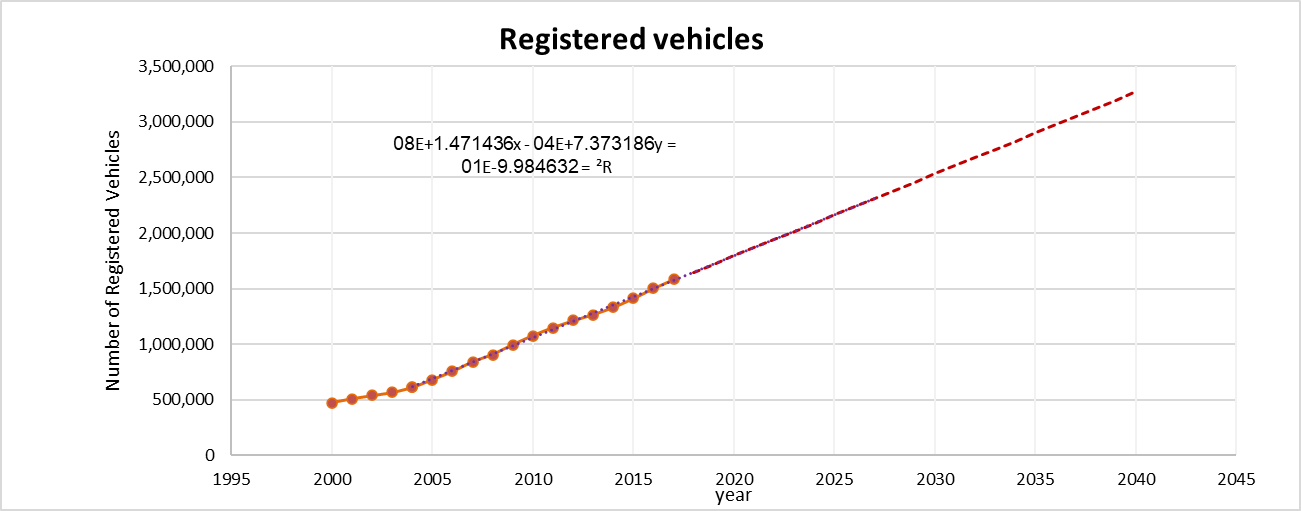 The trend for buying hybrid and electric cars in Jordan is not high enough;
although, unfortunately, there is no adequate information available on the number of
vehicles based on fuel type. Yet, it is common to see hybrid and electrical cars on
the streets because of the continuous rising in fuel prices has encouraged people to
buy hybrid cars, also supported by adequate maintenance and spare parts
availability. The future is possibly more encouraging for electric vehicles than for
hybrid vehicles, as shown by recent trends. Figure 5 shows recent trends for
vehicles (and their types) imported into Jordan. FUTURE PREDICTIONS
The trend for buying hybrid and electric cars in Jordan is not high enough;
although, unfortunately, there is no adequate information available on the number of
vehicles based on fuel type. Yet, it is common to see hybrid and electrical cars on
the streets because of the continuous rising in fuel prices has encouraged people to
buy hybrid cars, also supported by adequate maintenance and spare parts
availability. The future is possibly more encouraging for electric vehicles than for
hybrid vehicles, as shown by recent trends. Figure 5 shows recent trends for
vehicles (and their types) imported into Jordan. FUTURE PREDICTIONS To predict the future growth of the transportation sector, this article has used the available historical data that has an influence in this sector, starting with historical population growth, which is hard to predict, as it is controlled by external issues. The population has increased by 50 % in the last seven years. Prediction is to focus on electricity and gasoline consumption since almost all of the vehicles in Jordan run by gasoline, unlike diesel, which is used by other sectors such as heating, pumping, and electricity generation in areas with no natural gas supply. Gasoline consumption demonstrates the best fit, historically and for future predictions, showing a linear regression relationship with an R2 value of 98,9 %. Assuming that the use of the internal combustion engine in vehicles is to be replaced by hybrid and electric vehicles, we should take into consideration the electricity consumption (see Figure 6) and make predictions for the future demands with and without electric cars to see if extra generation capacity is required.
4 .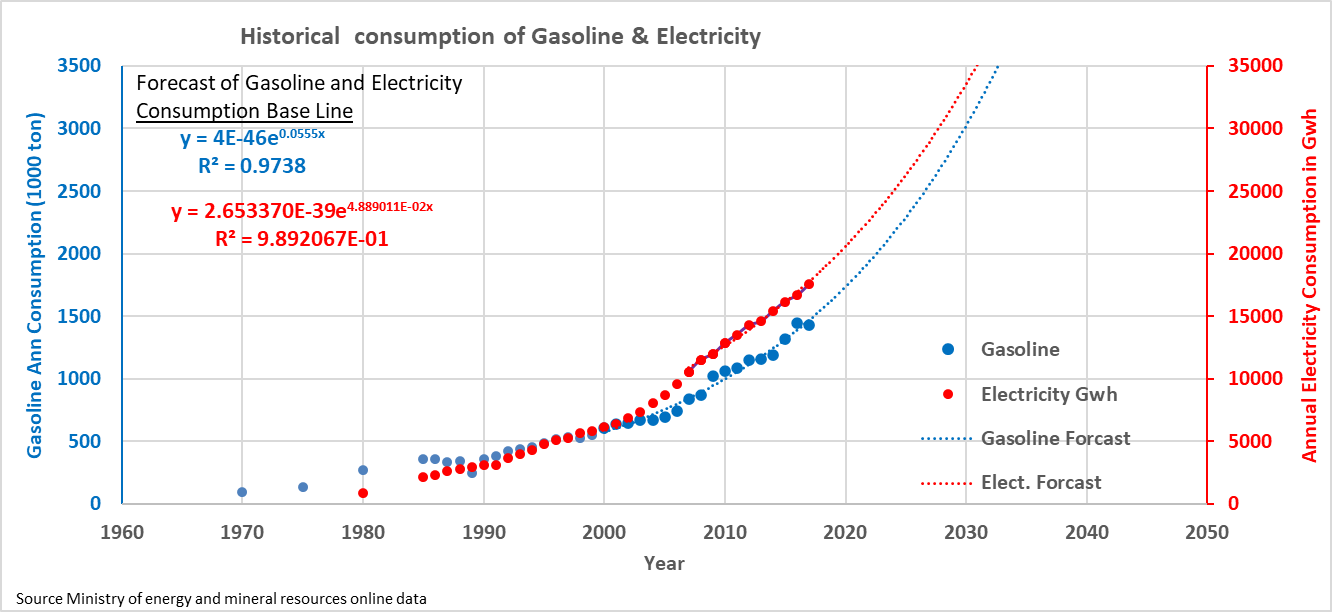 To predict the number of electrical vehicles and the rate of replacement, this
article assumes three different scenarios, compared to what happens if we do
nothing: - scenario (1) best case: 90 % of vehicles will be electric in 2040. -
scenario (2) most likely case: 65 % of vehicles will be electric in 2040. - scenario
(3) worst case: 40 % of vehicles will be electric in 2040. To predict the number of
vehicles and engine types, a forecast model (Figure 7) was made at the above three
different scenarios for the replacement rate of internal combustion engines by
electric engines by 2040 with a constant rate of growth linked to the forecasted
number of vehicles. Based on the number of vehicles, the modelling was performed for gasoline
consumption as internal combustion engines are being replaced, and the quantity of
gasoline was estimated for each scenario (Figure 7). Similarly, based on the number of electric vehicles compared to the total
number of vehicles as for the electricity capacity, the future electricity demand
was estimated from the base line, and the power requirements were estimated for each
scenario based on the assumptions of average annual distance of each electric
vehicle of 15 000 km, and an average electricity consumption per vehicle of 0,2
kWh/km. As shown in Figure 9, the effect of the extra load consumed by electric cars
in the three scenarios is negligible. All the results of the scenarios are presented in Table 2, it shows a
significant Annual savings in gasoline consumption compared to the base line
To predict the number of electrical vehicles and the rate of replacement, this
article assumes three different scenarios, compared to what happens if we do
nothing: - scenario (1) best case: 90 % of vehicles will be electric in 2040. -
scenario (2) most likely case: 65 % of vehicles will be electric in 2040. - scenario
(3) worst case: 40 % of vehicles will be electric in 2040. To predict the number of
vehicles and engine types, a forecast model (Figure 7) was made at the above three
different scenarios for the replacement rate of internal combustion engines by
electric engines by 2040 with a constant rate of growth linked to the forecasted
number of vehicles. Based on the number of vehicles, the modelling was performed for gasoline
consumption as internal combustion engines are being replaced, and the quantity of
gasoline was estimated for each scenario (Figure 7). Similarly, based on the number of electric vehicles compared to the total
number of vehicles as for the electricity capacity, the future electricity demand
was estimated from the base line, and the power requirements were estimated for each
scenario based on the assumptions of average annual distance of each electric
vehicle of 15 000 km, and an average electricity consumption per vehicle of 0,2
kWh/km. As shown in Figure 9, the effect of the extra load consumed by electric cars
in the three scenarios is negligible. All the results of the scenarios are presented in Table 2, it shows a
significant Annual savings in gasoline consumption compared to the base line
CONCLUSION AND RECOMMENDATION
Based on the results of prediction models, huge savings can be seen in terms of gasoline consumption. In year 2040 the savings in gasoline in best case scenario will be 2 569 000 teo, whereas the savings in worst case scenario will be 1142 000 teo. The transition to electric vehicles will cause an increase in electricity consumption of 8 827, 6 375 and 3 923 GWh in the assumed three scenarios respectively. The increase in electricity consumption and the decrease in gasoline consumption will encourage the use of renewable energy and reduce the import of fossil fuels. This will also have a significant impact on the environment due to reduced emissions. To encourage the shift to electric vehicles, it is recommended that the government adopt new policies and measures by accelerating the replacement and imposing taxes on cars with internal combustion engines. Moreover, the infrastructure for electric vehicles should be improved accordingly, which would have a significant impact both on the economy and on the environment.

